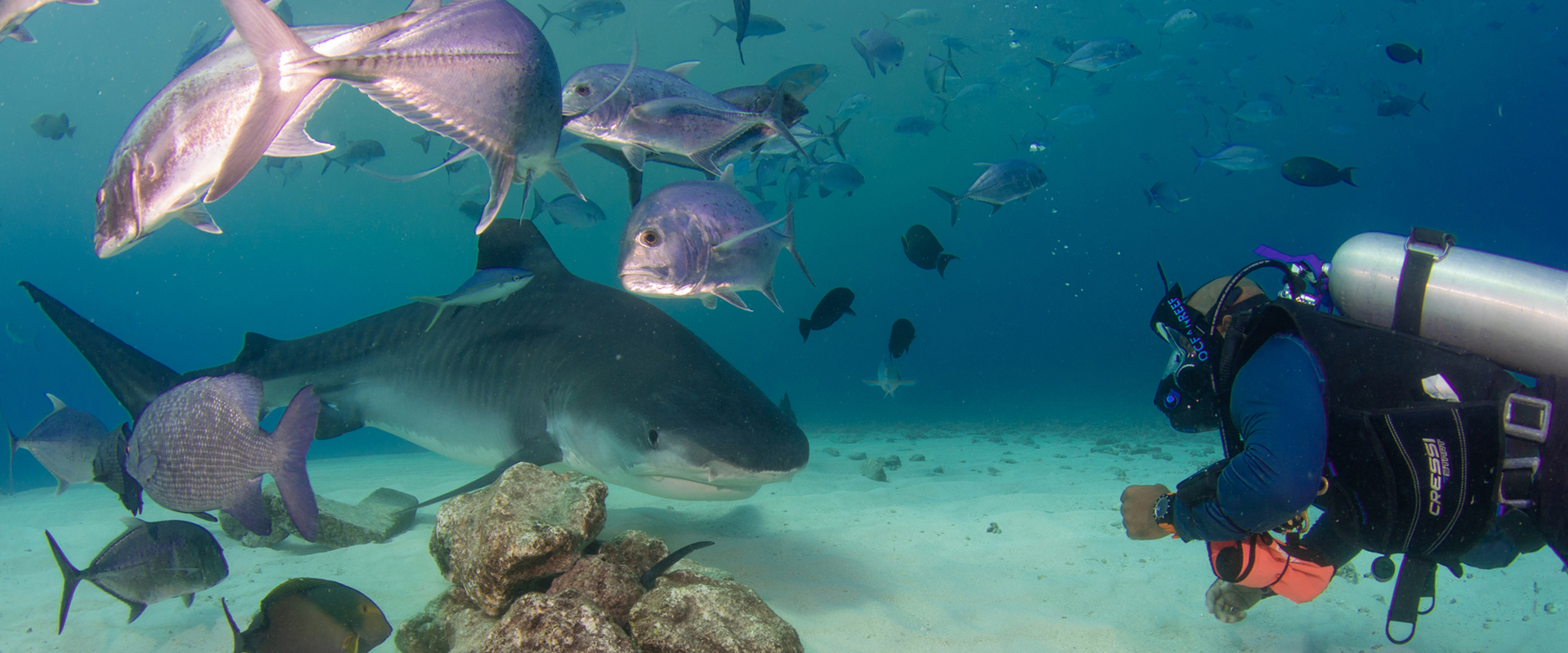
Tigers of Fuvahmulah
By Saeed Rashid
I remember when I first started diving and I was obsessed with sharks. I would travel to some amazing locations to try and find them only to get a glancing glimpse of a tiny silhouette way out into the blue. But that was exciting – I got to see a shark!
After a while, I got fed up with not having the close-up and personal encounter I wanted. I knew by spending most of my dive hanging out in the blue I was missing out on other great experiences and vowed to myself that I would never go to a destination just looking for large animals such as sharks, dolphins or whales. Instead, I would make sure I enjoyed all that the underwater world has to offer and that’s also when I took up photography. Many years on and I’ve been very fortunate to see some incredible delights underwater including a very sharky one early this year but I have my reservations about it.
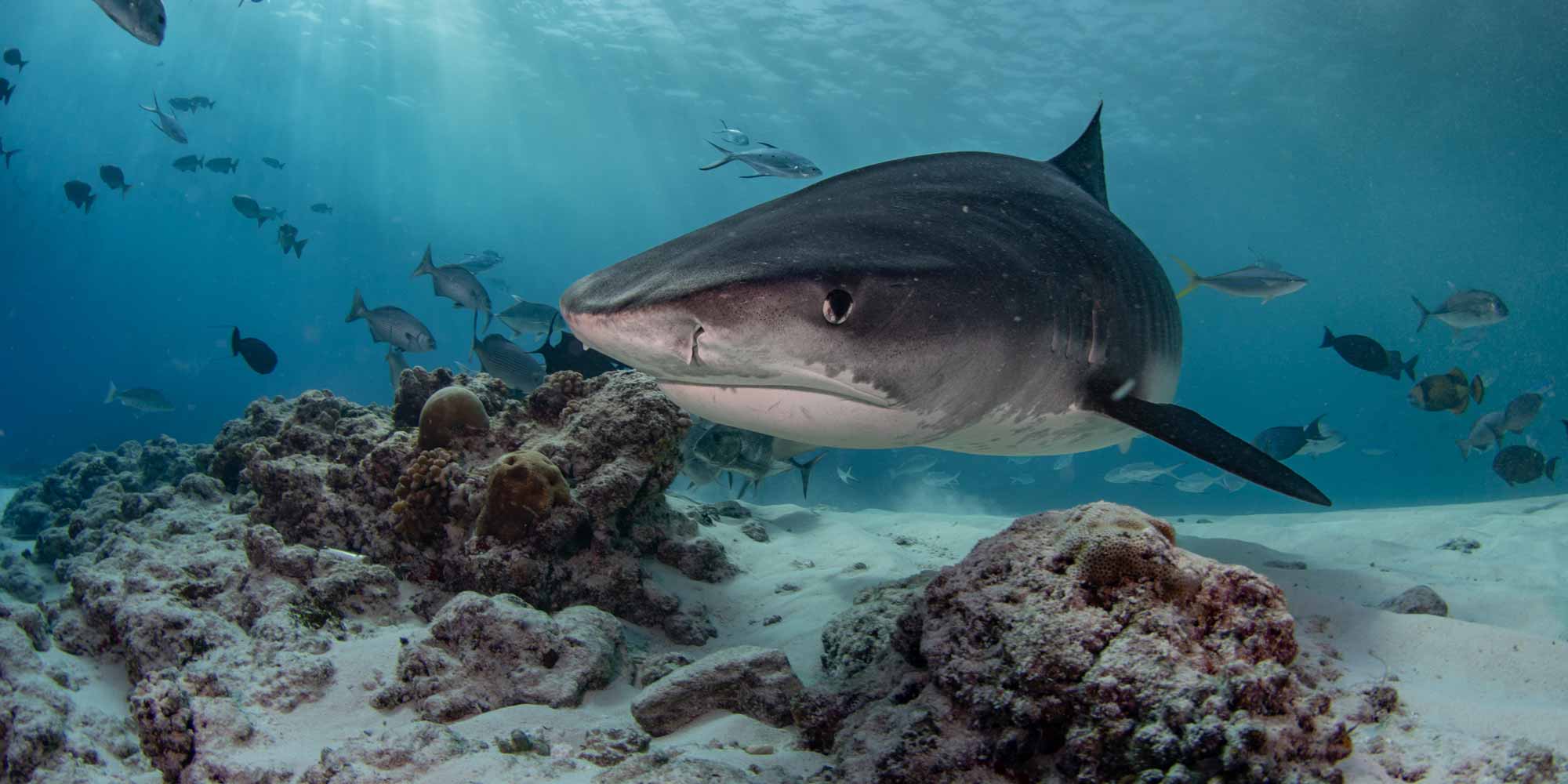
You may remember that Fourth Element team diver Shaff Naeem recently completed a 50-hour continuous scuba dive in the Maldives where I was the photographer. In the run-up to the event we were lucky enough to be invited to dive around the area. The Maldives has to be one of the most picturesque locations you can think of but there is so much more to this beautiful country than sun, sand, and 5-star resorts. Away from those pampered resorts catering to your every need there are some very special places and one of those is the island of Fuvahmulah, recently becoming famous for its tiger sharks. Fuvahmulah is at the most southerly point of the Maldives and is what is described as a “local” island, mostly meaning this is where Maldivians actually live with few internationally owned resorts and mostly locally run guesthouses. It has the feel of the genuine Maldives from maybe 30 years ago.
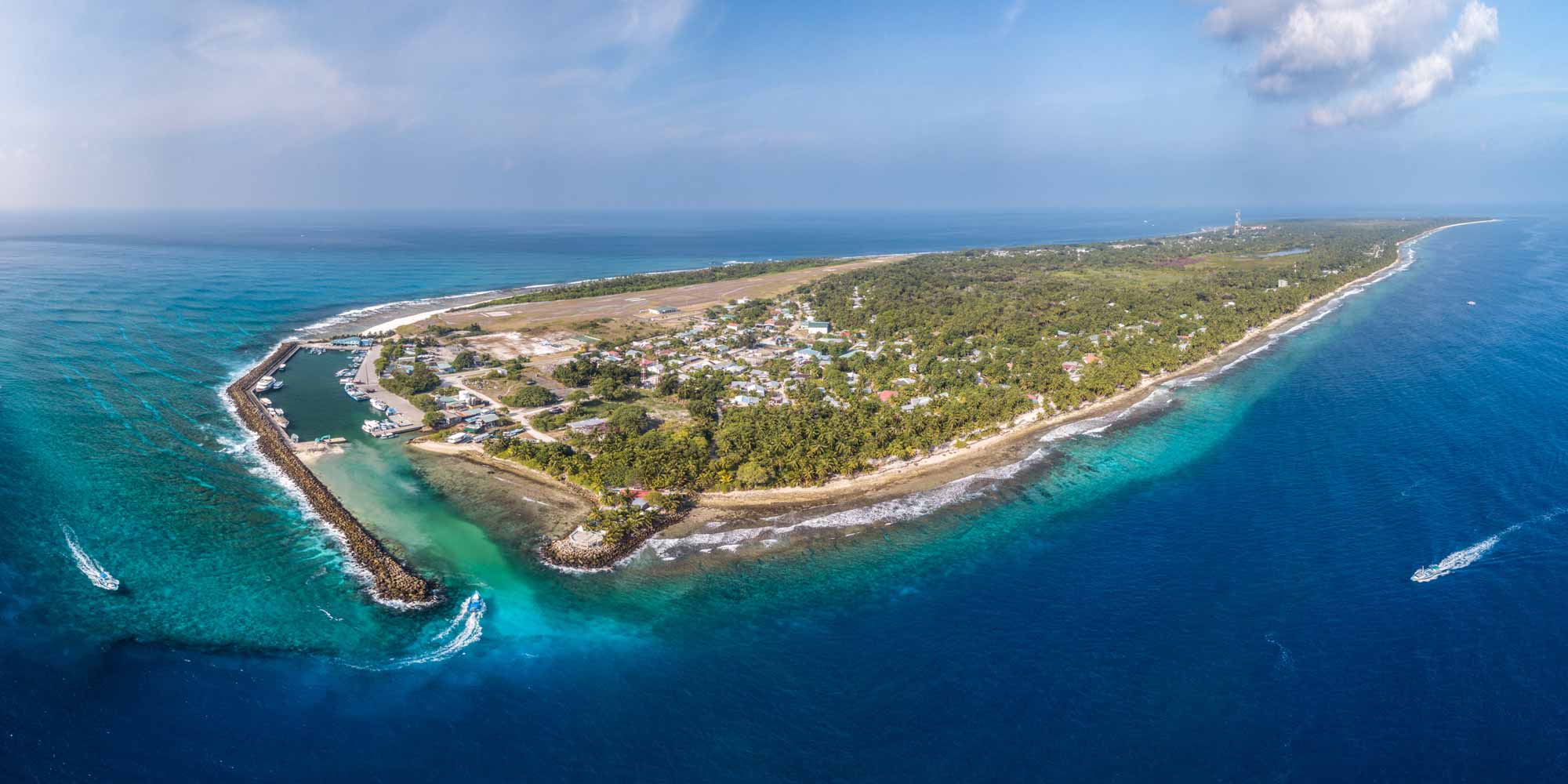
Sitting just to the south of the equator, the geography of Fuvahmulah makes it one-of-a-kind in the Maldives and having no other landmasses close by its subjected to lots of deep-water currents which attract a variety of pelagic sea life. Big waves batter its coastline and until the harbour was built in 2005, transit to the island was incredibly difficult. The new harbour not only made it easier to bring goods and people to the island but it also gave a new home to the local fishing fleet and this had an interesting side-effect. The fleet’s fish waste was originally dumped over the harbour wall attracting big sharks and with this the shark diving industry was born.
There are now believed to be at least 200 tiger sharks in residence and where there are sharks there is money to be made. A study by the Australian Institute of Marine Science concludes that sharks are worth far more alive and swimming, approximately US$2 million in their life time. According to the scientific journal Biological Conservation, the Bahamas who have been big shark supporters for some time, receive over US$114 million a year into their own economy from shark related dive tourism. These are huge numbers but are there hidden costs to the sharks, the environment, and the diving industry?
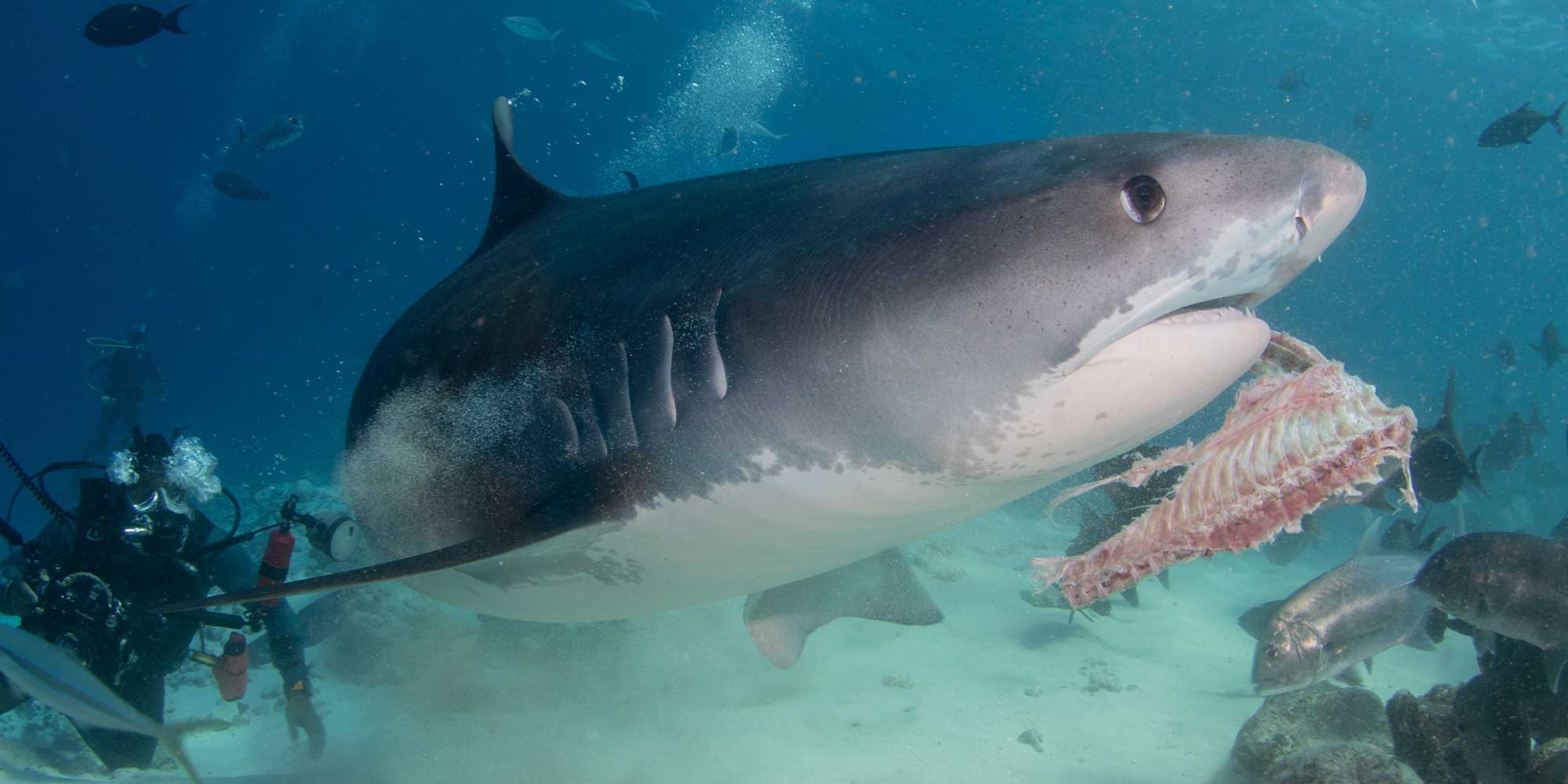
In Fuvahmulah the tigers are attracted to the shallows by baiting the water with old fish scraps from the market. They are opportunistic feeders eating all kinds of fish, marine mammals and reptiles. Their diet also includes flotsam, jetsam and carrion giving them the nickname of “garbage bins of the ocean” so they are generally very easy to attract.
Baiting on its own is a controversial subject but if we didn’t put bait in the water then it’s likely you wouldn’t see many sharks. Graham Buckingham from Bite Back made an interesting comment when I asked him about this practice, “The oceans should have plenty of sharks for each diver to see naturally but instead we are systematically exterminating them making a shark an extremely rare commodity…Baiting is now one of the only ways we can guarantee seeing these magnificent creatures and as long as it’s done safely for the sharks and divers then a lot of good can come from the experience.” But there is the concern of what would happen if it wasn’t done safely and that may undo all the good that has been done.
People always want to see and photograph apex predators. In Africa, you can sit several hundred metres away from a pride of lions and watch them through your binoculars but as we all know underwater visibility is considerably less so you have to get much closer. This means having to encourage the sharks to you and by using bait in Fuvahmulah you can certainly get very close to some of the biggest predators you possibly will ever encounter.
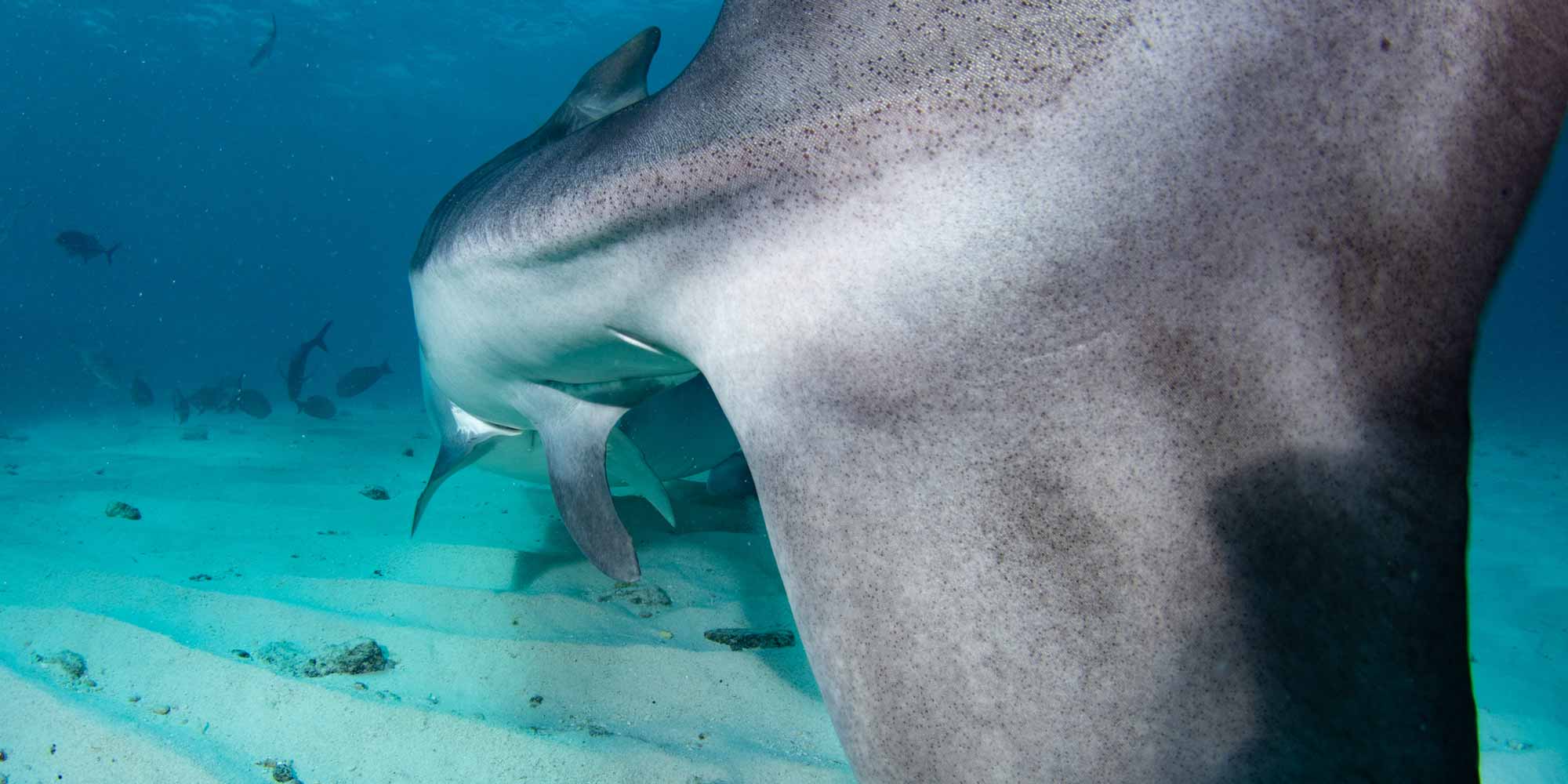
Interestingly, in a conversation with a representative of The Tourism Ministry of the Maldives I was told that shark feeding/baiting is illegal in there although he wouldn’t comment on the tigers of Fuvahmulah. So if illegal why does it happen? In my opinion, money talks and with the obvious draw of being able to get up close and personal with large tiger sharks its great publicity for the area. I did ask a few different sources about this and the subject was quickly changed.
Fuvahmulah is now thought of as one of the best places in the world to see tiger sharks but at the moment there is little regulation for dive operators with many new centres springing up all the time. Only a handful of years ago there was just one dive centre but now there are at least 6 with more on the way. At the moment each dive centre has 30mins with the sharks and you descend along the reef wall and then swim a few hundred metres to the mouth of the harbour. Here there is the only shallow flat sandy area around the island and this is where you meet the sharks. We dived with 3 different dive operators, all with slightly different procedures but all freely baiting the water as soon as the divers were settled. This is the process where the support boat throws fish carcasses in the water for the dive guides to grab as quickly as they can and bury under large rocks for the sharks to then ‘hunt’ out. While this is happening, sharks are patrolling the area. This whole process seems fraught with danger to me and although some dive centres seem to manage it well unfortunately others didn’t. On one dive I looked behind me and a tuna tail was sitting on the sand right between my fins. Needless to say, I moved fairly quickly before it (and not I) was hoovered up by a shark!
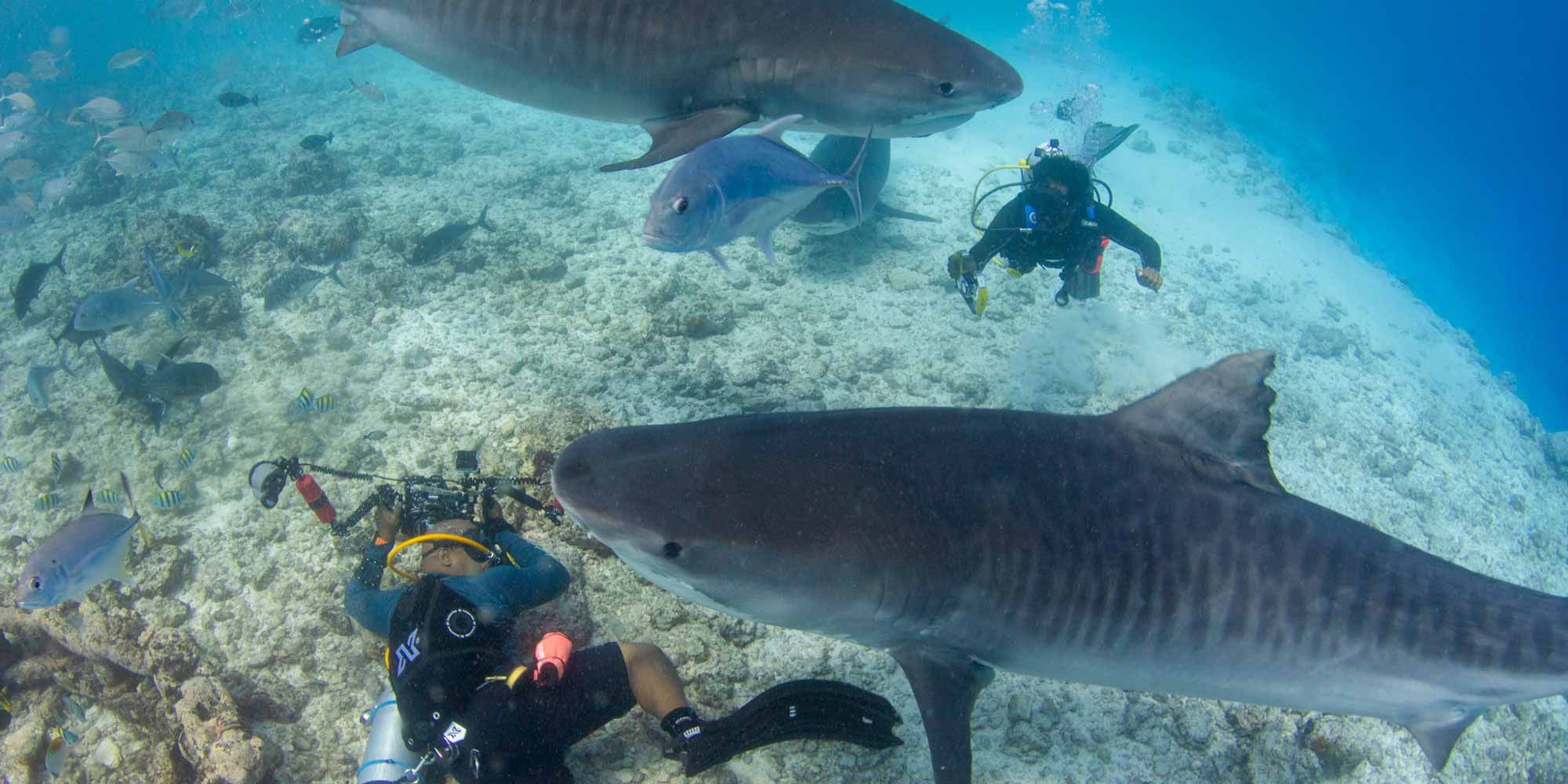
Every dive centre boasts their own expert in shark behaviour. One likes to “arm” their divers with sticks, seemingly a good idea if used correctly. The advice is that if a shark approaches, hold the stick vertically and the shark bumps the stick then veers away. Another will say sticks can be incredibly dangerous if misused.
A good friend once told me, “The shark you have to worry about is the shark that you don’t see,” meaning eye contact is vital and having someone cover your back is just as important. Most of the time we felt like there were plenty of eyes on the sharks but this didn’t always happen. At one point when I was moving position, Shaff had sharks coming towards him from 3 different directions and there was a huge tiger behind me which I only noticed when a massive tail swiped me around the face. That’s one way to wake up in the morning but where was my rear cover? I overheard one dive guide saying that they have taken Discover Scuba Divers (those on try dives) to see these sharks which is really quite extraordinary. Even without the sharks, the diving takes place in the mouth of an active harbour with constant boat traffic which can be scary for anyone let alone a completely inexperienced diver. It’s at times like these when accidents happen and we can all see the headlines.
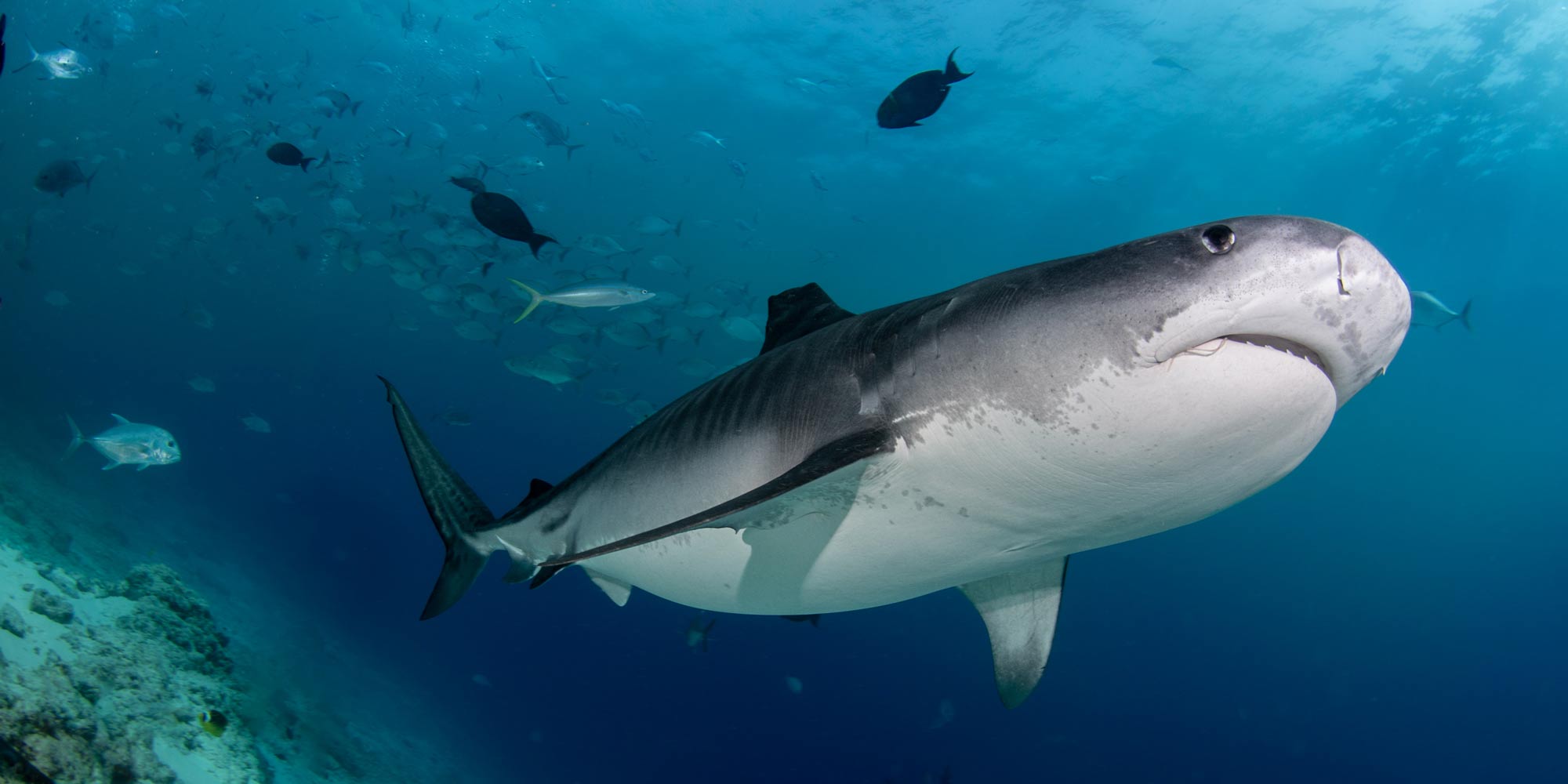
Some kind of regulation is clearly needed. My hope is that there isn’t an accident at Fuvahmulah before rules can be brought in. Whether it involved a tiger shark or not the whole of this fledgling industry, potentially beneficial to sharks, would be in danger. When we met the current mayor of the island, Ismail Rafeeq, I mentioned my concerns. He said he was aware of current practices which he wants to change. Ismail would like to bring in global regulations for all and extra taxes on the divers to pay for things like an education centre and maybe shark rangers to make sure people are diving safely. These all sound like great moves forward but often relies on cooperation between competing businesses which isn’t always the easiest to get.
All of this said, the diving here was amazing and I have never been so close to such impressive animals. It’s an experience that I will definitely not forget and hope that increased regulation will allow Fuvahmulah’s resident tiger sharks to be protected and experienced safely by many more of us in the years to come.
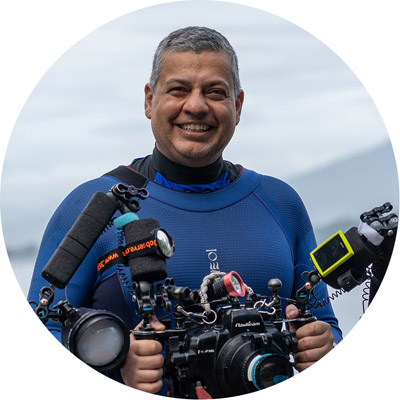
Saeed Rashid
Saeed is a well known photographer and journalist (underwater and on land). When he is not below the surface, he teaches photojournalism and is never happier than when he has a camera to hand. Saeed is also a fourth element Team Diver.
